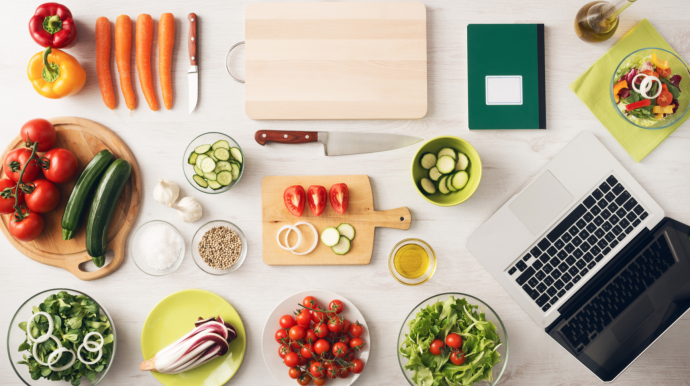8 Kitchen Hacks: Avoiding Cross-contamination

What is cross-contamination? It's pretty much what it sounds like - one thing is contaminating another. In this case, it's when food bacteria are transferred from one surface to another. Sounds harmless - except it's not. When given enough time, the right temperature and some moisture, bacteria can grow and thrive to levels that make you sick. The Center for Disease Control and Prevention identifies cross-contamination as one of the top 5 causes of food-borne illnesses - so prevention is key. Think about these 8 things to keep things in the kitchen clean and safe. These quick and effective kitchen hacks are hopefully going to make your time in the kitchen just a little bit happier and safer!
1. Corralling germs
When handling raw meat, such as chicken, avoid cross-contamination from bacteria by placing the plastic-wrapped chicken on a rimmed baking sheet. Cut open the package with kitchen shears, leaving the empty package, shears, and any other dirty utensils on the sheet, and pat the chicken dry. Then discard the packaging and transfer the baking sheet and tools to the sink to clean.
2. Keeping a digital scale clean
Weighing raw meat directly on the platform of a digital scale is not a great idea in terms of kitchen hygiene. Instead, cover the platform with a sheet of plastic wrap or slide the entire scale into a large zipper-lock bag. The buttons are usable and the readout visible through the plastic, which can be washed and reused for the same purpose.
3. Stop! Don’t rinse that chicken
Avoid rinsing raw meat and poultry. Contrary to what some cookbooks (or your grandmother) advise, rinsing is more likely to spread contaminants around the sink (and perhaps onto nearby foods like lettuce sitting on the counter) than to send them down the drain. Our kitchen tests also failed to demonstrate any flavor benefit to rinsing meat or poultry before cooking.
4. Double-duty dishes
Keep your food safe and clean while still saving yourself from having to wash any extra dishes by reusing the same platter to hold meat before and after cooking. Simply cover the dish with plastic wrap or foil before putting the meat on it. Remove the protective layer after all the meat is in the pan or on the grill and voilà—you have a clean platter ready for the cooked food.
5. Neatly unwrapping vacuum-sealed packages
When opening poultry or meat wrapped in vacuum-sealed plastic, it’s hard to prevent leakage onto your countertop. Try this simple mess-minimizing technique.
With a sharp knife, cut a large x in the plastic on the top of the package, being careful not to cut into the poultry or meat.
Gently pull the corners of the plastic away from the center of the x and remove the poultry or meat, leaving all of the juices in the bottom of the package.
6. When recycling is not ok
Used marinade is contaminated with raw meat juice and is therefore unsafe to consume. If you want a sauce to serve with cooked meat, make a little extra marinade and set it aside before adding the rest to the raw meat.
7. Season safely
Though bacteria can’t live for more than a few minutes in direct contact with salt (which quickly dehydrates bacteria, leading to cell death), it can live on the edges of a box or shaker. To avoid contamination, transfer a little salt and ground pepper to small bowls. This way, you can reach into the bowls for seasoning without having to wash your hands every time you touch raw meat or fish. Afterward, the bowls go right in the sink or the dishwasher.
8. Preventing spice rub contamination
There are many of spice rub recipes to yield about a cup, so some will be left for the next session at the grill. To avoid contaminating the entire batch with raw food, portion out only as much spice rub as you’ll need in a separate bowl, then seal and store the remaining spice rub.
